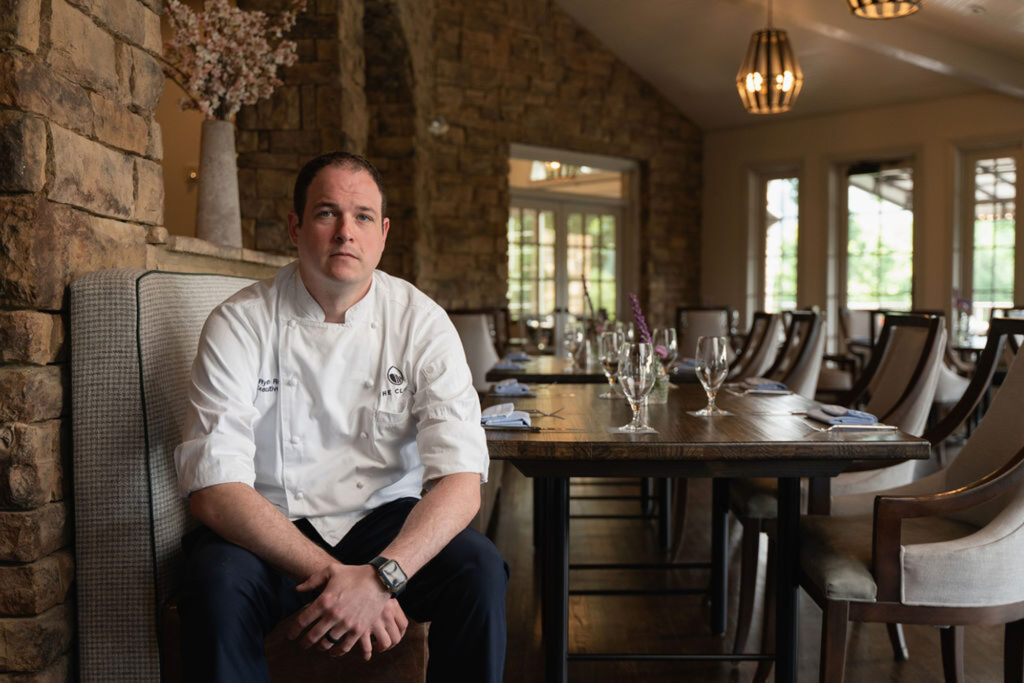Guards deliver groceries and packages, run errands and help with coronavirus-related requests. ‘It’s more hospitality-driven than policing.’
Michael Malone lives in a gated community staffed by former police officers, but the thought that they are protecting him from criminal activity has never crossed his mind.
Disturbances of any kind are pretty much out of the question. Even teenage house parties “get squashed pretty quickly,” says the 57-year-old founder of a cybersecurity firm.
Instead, the security personnel feel like part of the family, says Mr. Malone, who is on first-name basis with the staff at Glenwild, a 950-acre community in Park City, Utah, with about 140 homes and two entrances for vehicles.
Mr. Malone spent about $4 million to build his 10,800-square-foot, four-bedroom home in 2006. He and his wife, Caitlin Malone, spent an additional $800,000 in 2019 on renovations to the property, which includes a two-bedroom apartment over the garage. The home has views of three ski resorts
Their annual homeowner fee of $5,830 covers security, as well as snow removal and the upgrade of common areas. It also includes some unexpected perks. A few years ago, the security staff helped the couple find their Bernadoodle, Princess Leia, who ran away during a fireworks display. The staff also clamped down on construction noise from neighbors, says Mr. Malone.
Gated communities, which once focused on keeping out crime and unwanted visitors, now have mostly shifted their focus to catering to more-basic household needs, says Rob Duckett, president of the Cliffs, which includes seven gated communities in North and South Carolina.
Those needs can include fixing flat tires, delivering food and, recently, helping deal with coronavirus-related requests. Security staffers now bring groceries to isolated residents, run errands for at-risk homeowners and impose 14-day self-quarantine measures on the owners of second homes who arrive from other locations.
“It’s more hospitality-driven than policing,” Mr. Duckett says.
The exclusive communities still strive to maintain a velvet-rope feel, with elaborate driveways, uniformed guards and roving patrols. Real-estate pros say the imposing security gates, high-tech extras and employees who know residents—and even their friends—on a first-name basis are increasingly a must for luxury-home hunters.
“There’s some exclusivity in living behind a gate,” says Charlie Taylor, a Park City, Utah, managing partner at The Agency real-estate firm. Costs for the added security are typically included in maintenance packages, which vary from several hundred to several thousand dollars a month, he adds.
Residents praise the small-town feel that can come from such arrangements. They also appreciate the extra eyes on their properties as they increasingly embrace indoor-outdoor living.
At Carlton Woods, an 827-acre gated community in the Woodlands, Texas, some residents “don’t even keep their doors locked,” says Cheryl Edwards, 50, an executive assistant, who moved in three years ago.
The 24-hour patrols make Ms. Edwards and her partner, Scott Cohen, feel secure. When they redesigned their nearly 11,000-square-foot, six-bedroom, eight-bathroom home, they didn’t worry about privacy, or even keeping their drapes closed, said their interior designer, Nancy Charbonneau.
The cost of that security is included in their $3,250 annual homeowner fees. Homes similar to the couple’s sell for about $3 million,says Janet Owens, a local broker.
Demand for gated communities have spurred an increase in such developments over the past few decades, moving beyond traditional sunbelt areas to every corner of the country—and abroad.
In the 1970s, private communities were aimed primarily at retirees in warm-weather states, like Florida and California. The number of households in those communities rose from more than 7 million in 2001 to about 11 million in 2009, the latest year figures are available, according to the U.S. Census Bureau’s American Housing Survey.
As for security concerns, gated communities in Orange County, Calif., had about 20% less crime than similar nongated areas, according to a 2018 study in the Oxford Handbook of Environmental Criminology. Nongated areas reported an average of two property crimes in a three-year period, stated Charis Kubrin, a criminologist at the University of California, Irvine, who co-wrote the report. It’s already low and gets even lower,” she says.
At Glenwild in Utah, speeding on the property is the biggest problem, says John Coyle, Glenwild’s director of community safety and relations, and a former police lieutenant.
While Mr. Coyle and his team don’t have the power to make arrests, each taps into their police training. “We’re out, we’ve visible and we ask a lot of questions,” he says.
Their main duties tend to include package delivery, specialized vacation checks and installing security cameras. That means they are entrusted with guest lists and home-access codes.
“They act almost like a concierge,” says security consultant Chris McGoey, based in Murrieta, Calif., about staffers working at gated communities in general. He says just the presence of security personnel is enough to deter crime, leaving the employees to focus elsewhere.
Proponents say gated communities also are attractive because they are somewhat insulated from market fluctuations. Gated homes in California saw less of a drop in value during the 2008 recession than those outside of those communities, according to research co-written by Elena Vesselinov, a sociologist at Queens College, City of New York.
In Los Angeles, home to the country’s priciest gated communities, the developments can lure buyers far from downtown, says Christophe Choo, a Beverly Hills-based agent with Coldwell Banker.
Communities such as Bel Air Crest, Beverly Park and Mulholland Estates also draw buyers willing to invest in housing stock from the 1980s and 1990s, he says. While many homes in the $6 million to $10 million range need updates, interest has held up because space for such developments is becoming scarce. “There’s definitely a small amount of inventory,” Mr. Choo says.
Dropping by is a thing of the past at the weekend home of Rose and Nicholas Colonna in La Quinta, Calif. Their community has 24-hour security and car patrols outside their six-bedroom, eight-bathroom home. “They know every car on campus,” says Ms. Colonna, a 57-year-old homemaker.
The Colonnas live in Hideaway, a 590-acre gated community. They purchased their home in 2016 for about $3.35 million and spent an additional $1 million on decor and renovation. They pay $600 in monthly fees, including security.
In Ms. Colonna’s home, the outdoor pool and fire pit allow the family, with three adult children, to enjoy unobstructed views of the golf course. The family also has an outdoor seating space adorned with crystal chandeliers.
“You could never do that if it wasn’t private,” says their interior designer, Barclay Butera, who is based in Newport Beach, Calif. “You have a lot more confidence in what you can do outdoors.”
He estimates that 50% of his clients live in gated communities, up from about 25% some 15 years ago.
In Hilton Head, S.C., about three-quarters of homes are in gated areas, says local agent Cindy Creamer.
Kim Braswell McPhail owns a home at Wexford Plantation in Hilton Head, with her husband, David McPhail. She says having a gated entrance and marked security cars on patrol give them peace of mind. For that they pay $1,600 in monthly fees, including other amenities.
Their 7,000-square-foot home, purchased for $1.6 million in 2012, has a lanai for outdoor entertaining. The two often see the patrols in the evening, when neighbors drive their golf carts to social gatherings around the community. “We might have someone run over a mailbox, but no break-ins,” she says.
Article courtesy of Mansion Global





